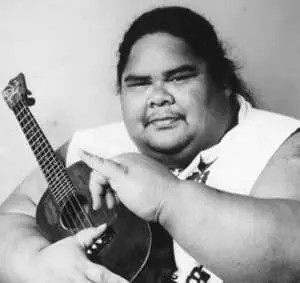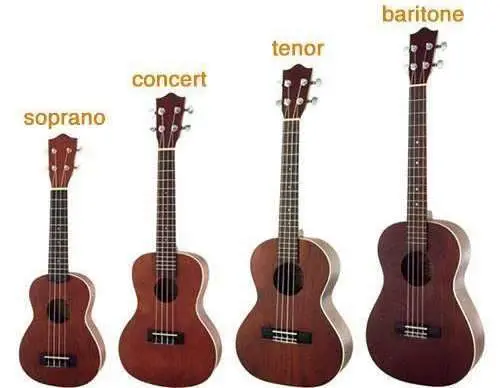
History is a ukulele
Every person has ever heard Hawaiian music, made wave-like movements with their hands and smiled happily at the sight of Hawaiian colored shirts,  which in any weather remind of a sunny and carefree summer. And the first association that appears at the word “Hawaii” is the ukulele ukulele, whose story will immerse you in memories of the sea, golden sand, flexible waves and joyful laughter. The instrument, when the strings or keys are touched, comes to life. With his incredible motives, melodic sound and subtle sounds, he would like to tell his story, what he had to go through in order for people to enjoy this incredible music.
which in any weather remind of a sunny and carefree summer. And the first association that appears at the word “Hawaii” is the ukulele ukulele, whose story will immerse you in memories of the sea, golden sand, flexible waves and joyful laughter. The instrument, when the strings or keys are touched, comes to life. With his incredible motives, melodic sound and subtle sounds, he would like to tell his story, what he had to go through in order for people to enjoy this incredible music.
Ukulele – a miniature four-string guitar, which is deservedly associated with the Hawaiian Islands, but in fact this instrument is more of a Portuguese invention than a Hawaiian one. Unfortunately, the exact date of birth is not known, but based on various historical sources, this happened in 1886.
But how could a European instrument get to Hawaii? Now any historian will be knocked off his feet if he is asked to provide reliable facts, but he will not find anything, since they have not been preserved. At such moments, legends usually come to the rescue.
History in brief
The instrument, which entered the hearts of many as a native Hawaiian, actually has its roots in Portugal, more precisely, to four of its natives. In the region of 1878-1913, many inhabitants of the Portuguese mainland decided to go in search of a better life, their choice fell on the Hawaiian Islands. Naturally, people moved there not empty-handed, but with their belongings, among which was an instrument called the braginya – a small five-string guitar that can be safely called the progenitor of the ukulele.
Having moved to a new habitat, many began to try themselves in various activities in order to somehow earn a living and food. So four friends Augusto Diaz, José do Esperito Santo, Manuelo Nunez and Joao Fernandez began to produce Portuguese furniture, which did not please the locals, and in order to at least somehow stay afloat, the friends retrained into the production of musical instruments.  Their experiments led to the fact that in 1886 an unusual instrument was born with a very interesting, lively and bright sound. The instrument had only four strings, which was one string less than that of its progenitor, the braginya. Which of the four invented it officially remains unknown, but the name of M. Nunez can be found on early models, although J. Fernandez was considered a recognized craftsman of playing this unusual instrument. Initially, the invention of the Portuguese was not approved by the locals, but everything changed after a small celebration, which was attended by Princess Victoria Kaiulani and her uncle, King David Kalakaua, who was the first to play the ukulele. Being a fan of this instrument, he decided to include it in the royal orchestra so that other people could enjoy it. It is not known what exactly made the inhabitants change their minds, either the king’s love for unusual music, or the fact that the ukulele was made from the Hawaiian acacia, which was a symbol of gratitude to nature. It is not for nothing that since then not a single holiday has been complete without the sounds of a four-string guitar.
Their experiments led to the fact that in 1886 an unusual instrument was born with a very interesting, lively and bright sound. The instrument had only four strings, which was one string less than that of its progenitor, the braginya. Which of the four invented it officially remains unknown, but the name of M. Nunez can be found on early models, although J. Fernandez was considered a recognized craftsman of playing this unusual instrument. Initially, the invention of the Portuguese was not approved by the locals, but everything changed after a small celebration, which was attended by Princess Victoria Kaiulani and her uncle, King David Kalakaua, who was the first to play the ukulele. Being a fan of this instrument, he decided to include it in the royal orchestra so that other people could enjoy it. It is not known what exactly made the inhabitants change their minds, either the king’s love for unusual music, or the fact that the ukulele was made from the Hawaiian acacia, which was a symbol of gratitude to nature. It is not for nothing that since then not a single holiday has been complete without the sounds of a four-string guitar.
Jumping flea
The name of the ukulele – ukulele – can be translated in different ways. The most famous variant is the “jumping flea” because of the characteristic finger movements that are more like chaotic jumps. Among the general public interested in this tool, there are several versions of why the tool received this unusual name.
According to the first version, this instrument was so nicknamed by the locals because the artist who performed the music played the strings so quickly with his fingers that it looked like fleas were jumping there. According to the second version, the king reigning at that time had an extraordinary love for this instrument, and the Englishman, who was in his service, grimaced so much when he played it that he himself looked like a galloping flea. Well, the last option, more noble. It is believed that the Queen of Hawaii, Liliuokalani, saw an overseas instrument and named it ukulele, which means “gratitude that came.”
The ukulele owes its world fame to the performance of the Royal Hawaiian Quartet at the Panama-Pacific Exhibition in San Francisco in 1915, after which everyone started talking about it. Until that moment, this instrument was known only in the Hawaiian Islands, where almost all the inhabitants played it, filling the streets and beaches with enchanting sounds.
Our modernity
The ukulele – ukulele or uke – is now becoming more and more popular. This little instrument can now be seen in almost every apartment, its sounds can be heard not only in Hawaiian films, but also on our streets, it is played by street and pop musicians. The unusual shape and rather small size, compared to other acoustic counterparts, lead the listeners to incredible delight and attract more and more attention. The high popularity of this instrument can also be explained by the fact that literally in a short time you can learn a couple of chords, which will be quite enough to accompany a cheerful song.
The high popularity of this instrument can also be explained by the fact that literally in a short time you can learn a couple of chords, which will be quite enough to accompany a cheerful song.
Now this four-stringed plucked instrument has firmly established itself in jazz; it was beyond its power to compete with country or rock and roll due to its characteristics. There are five varieties of this tool, which differ in size, shape and materials of manufacture. Ukuleles are made from wood, however, today you can find ukuleles made from plastic and plywood. The shape of the instrument is diverse – the masters are actively experimenting, giving the ukulele new touches and helping it play with new colors.
Everyone can play such an exciting instrument as the ukulele and give a joyful smile. No wonder that soon all the boulevards will sing songs with Hawaiian motifs.





